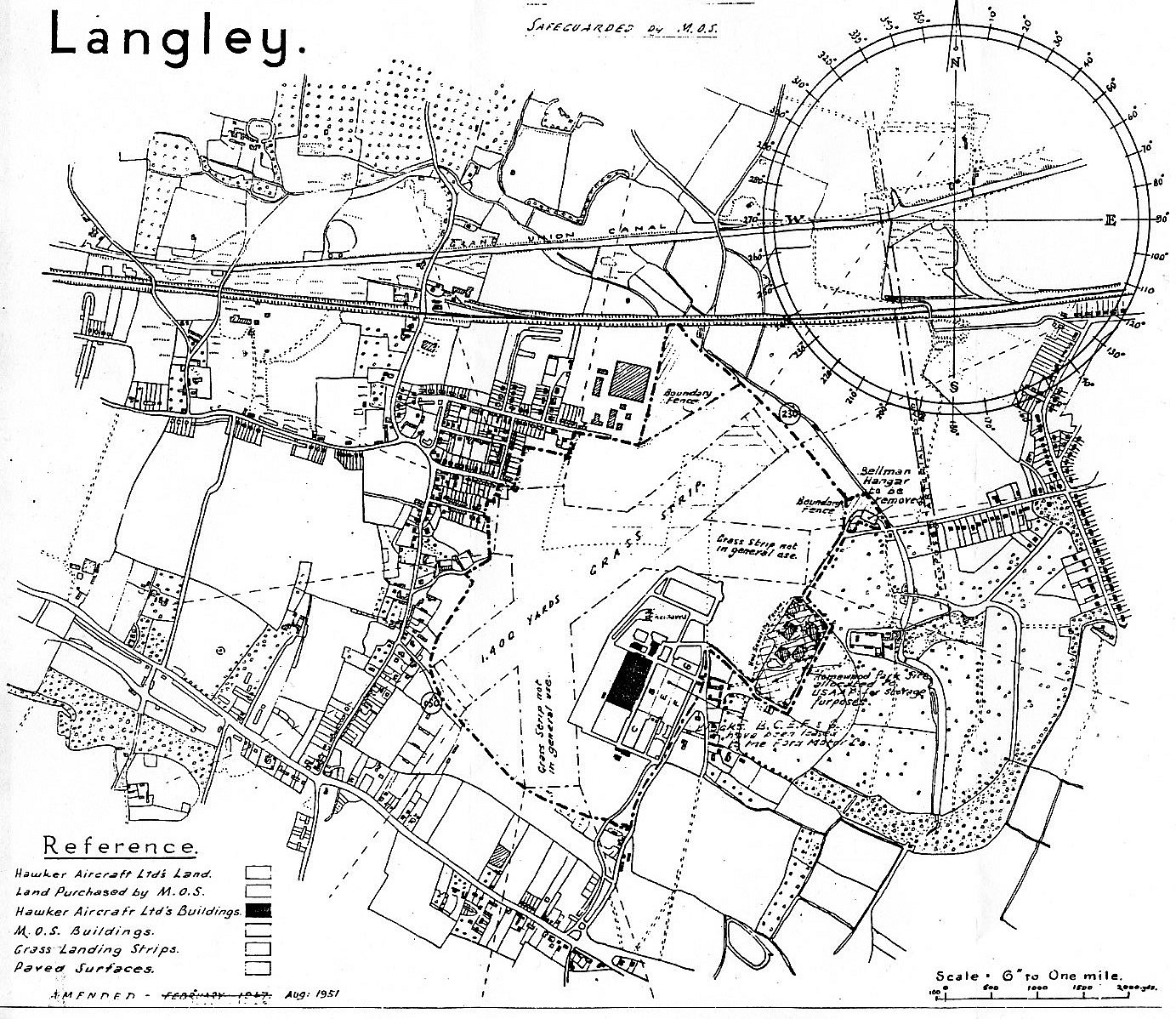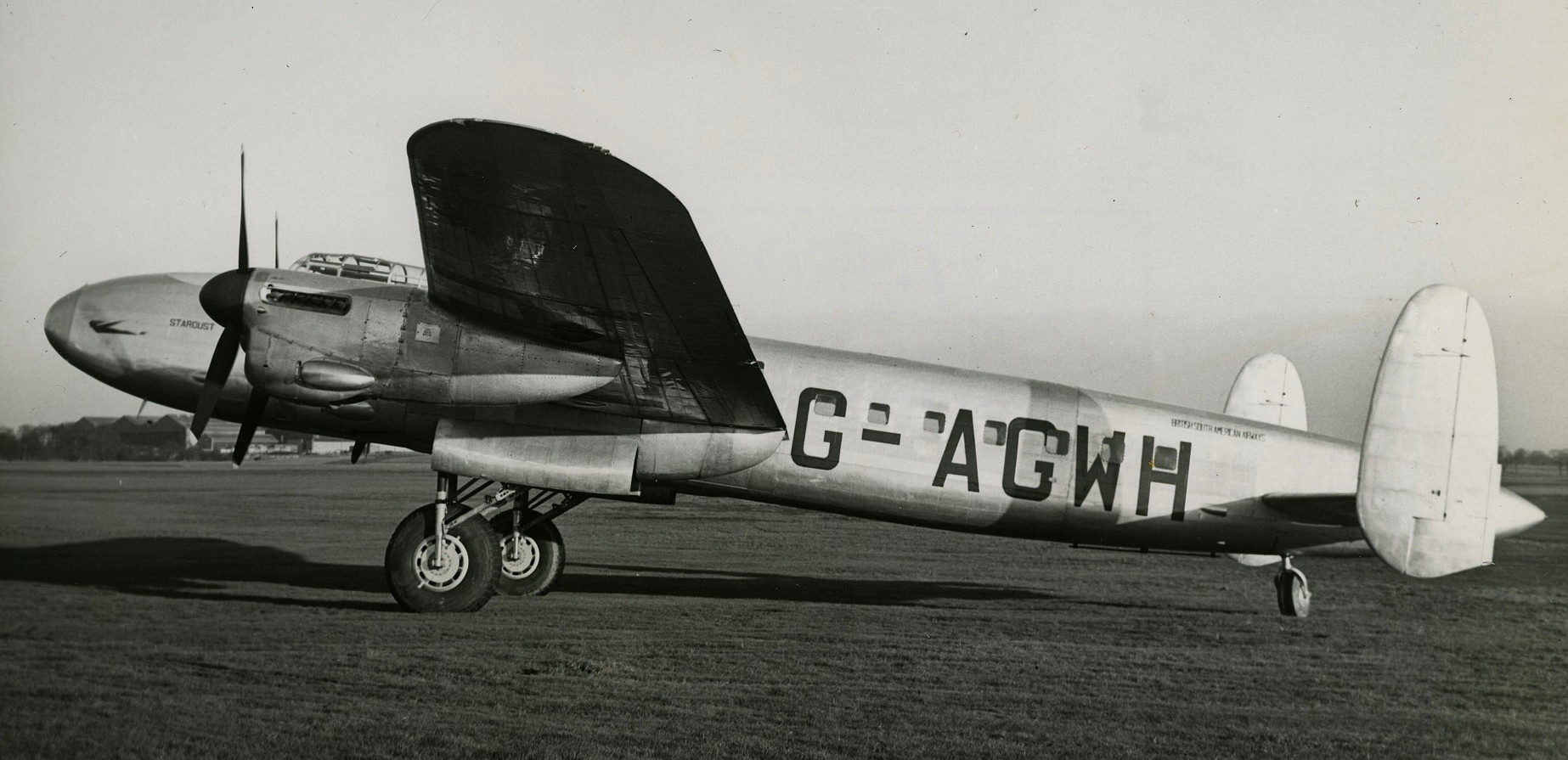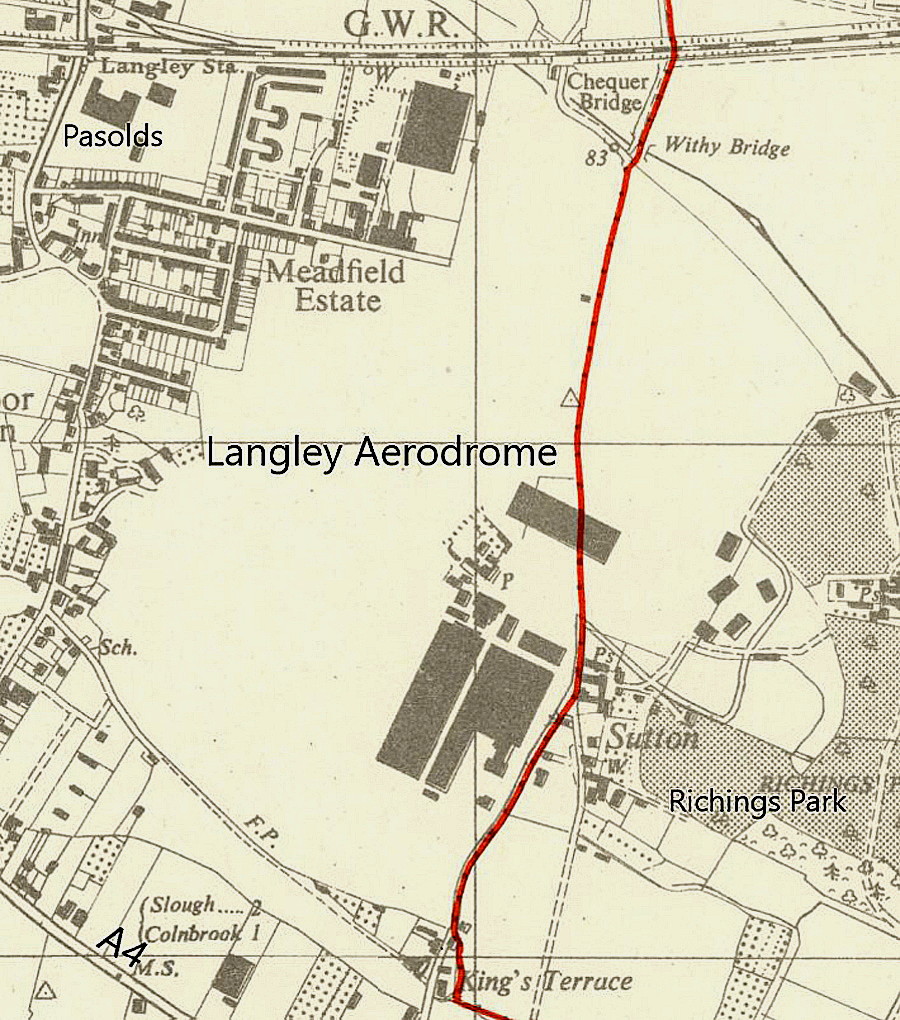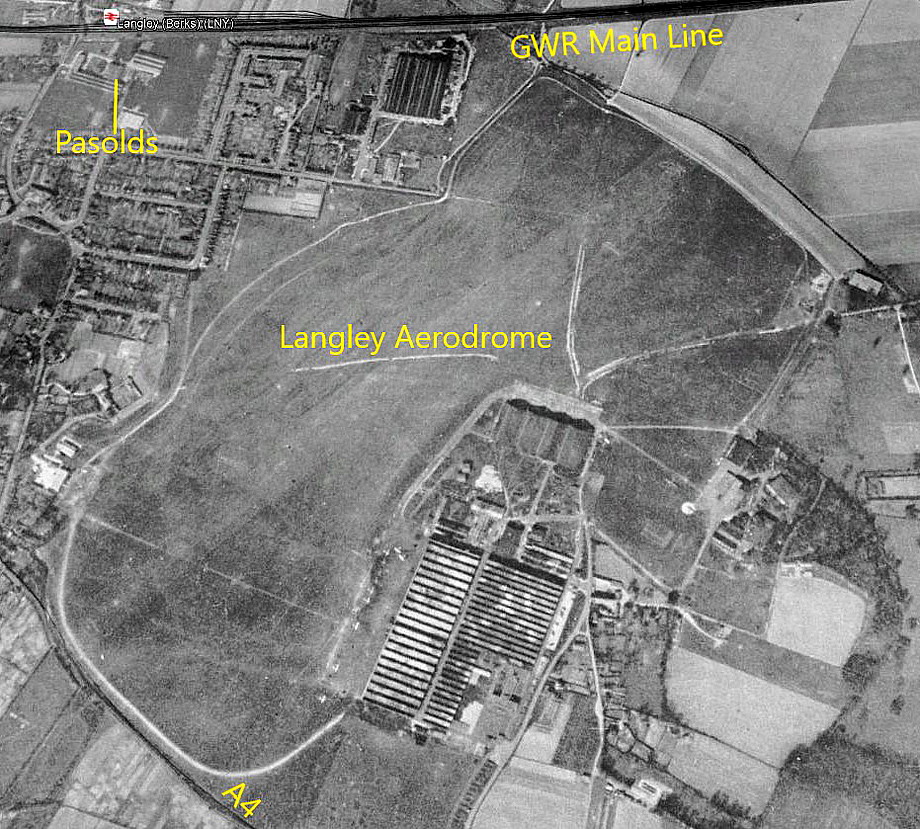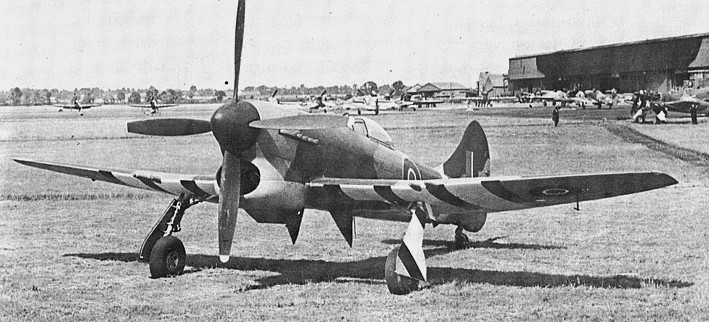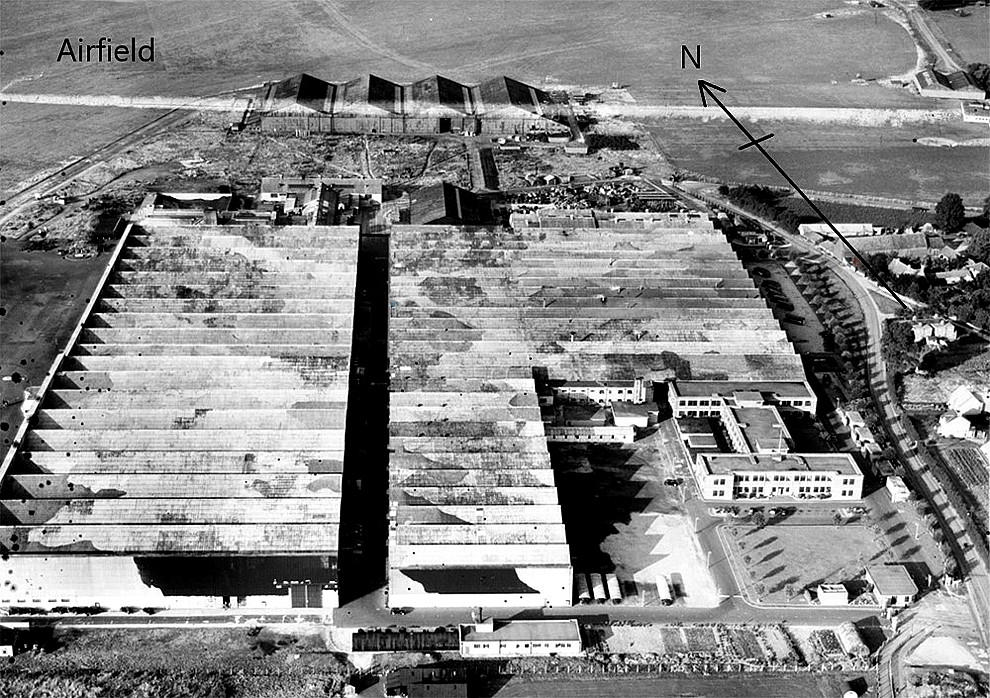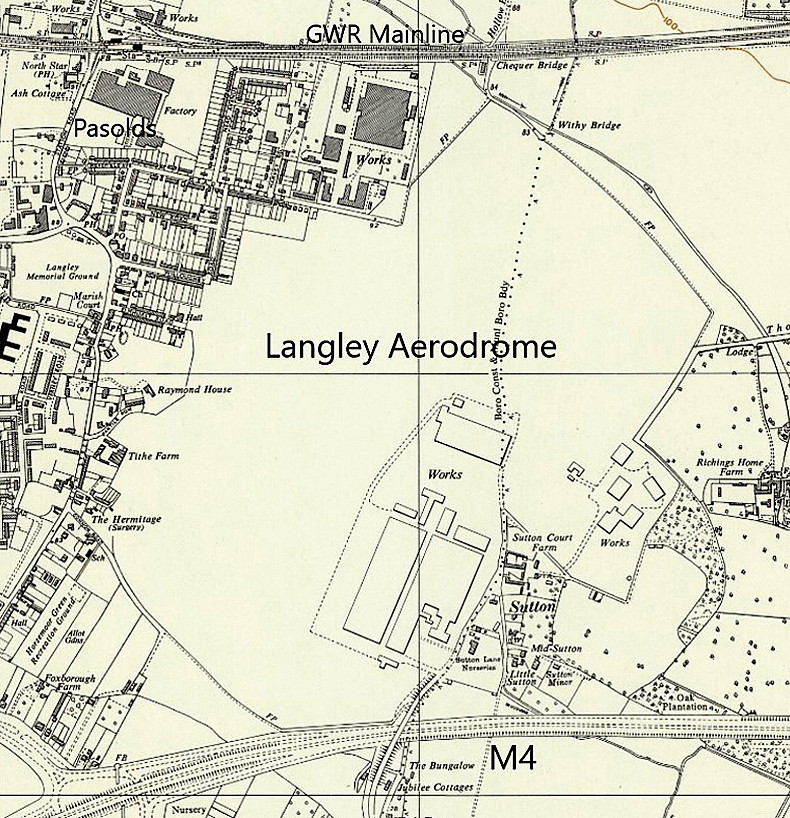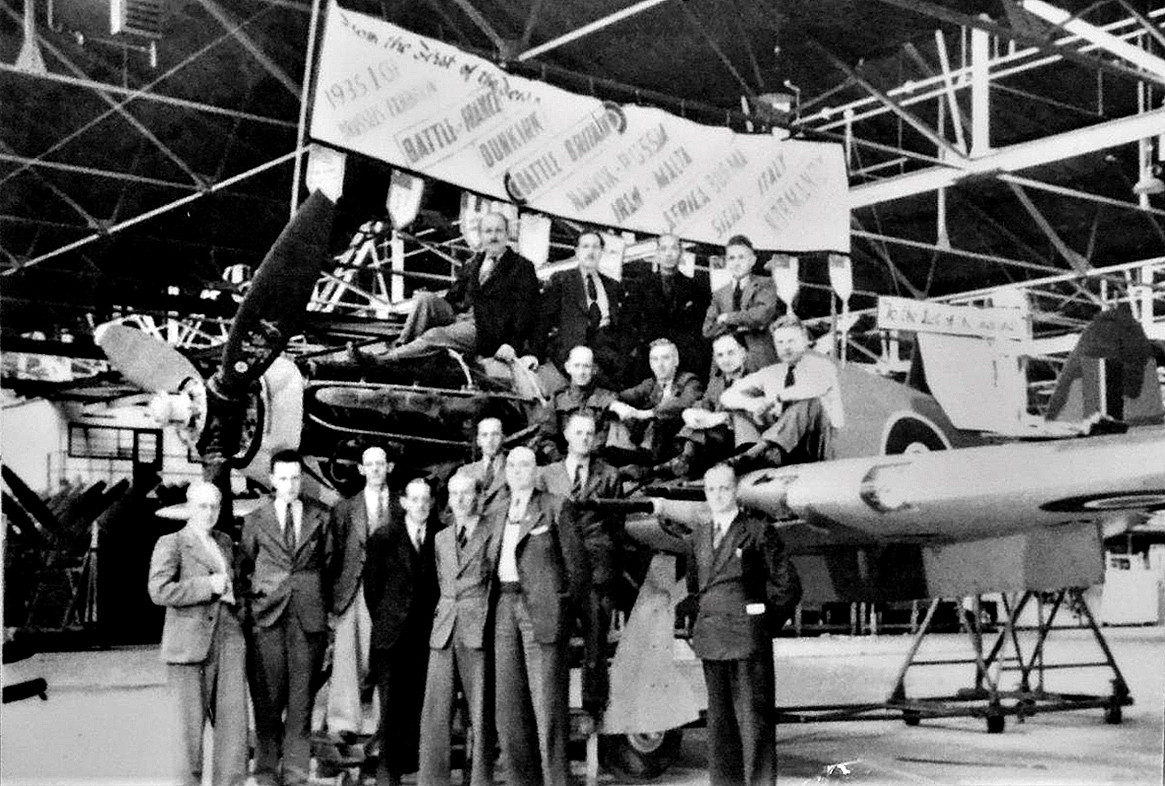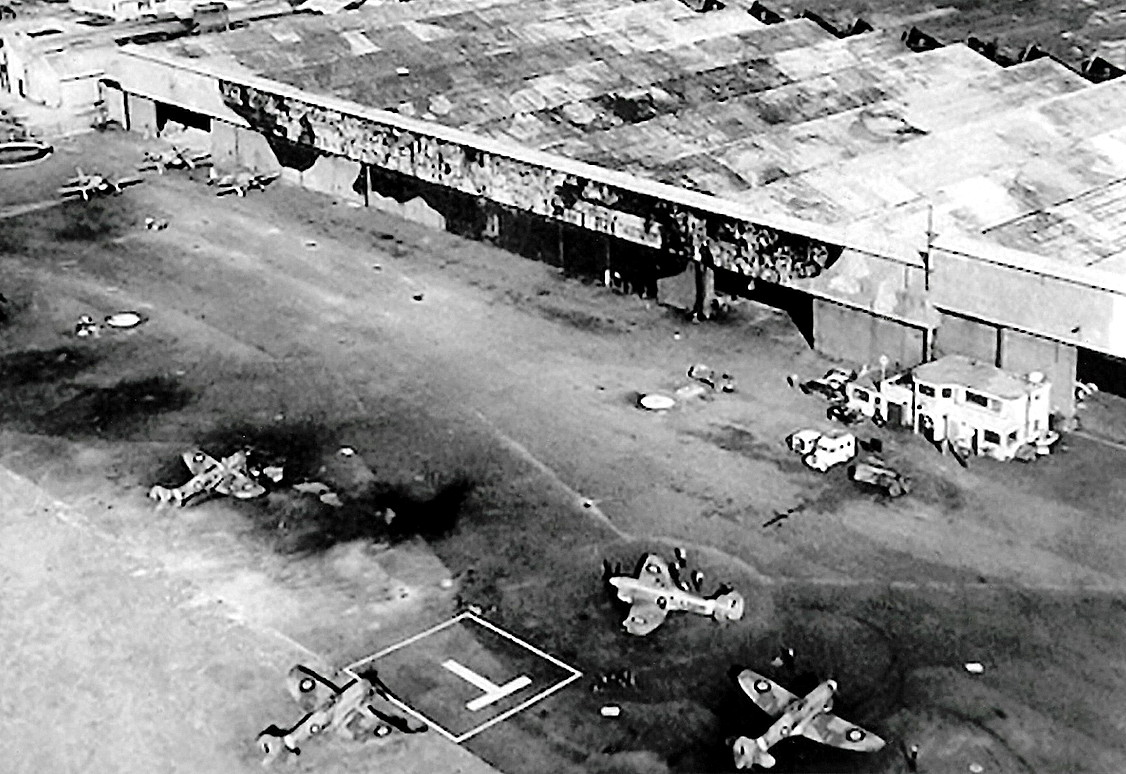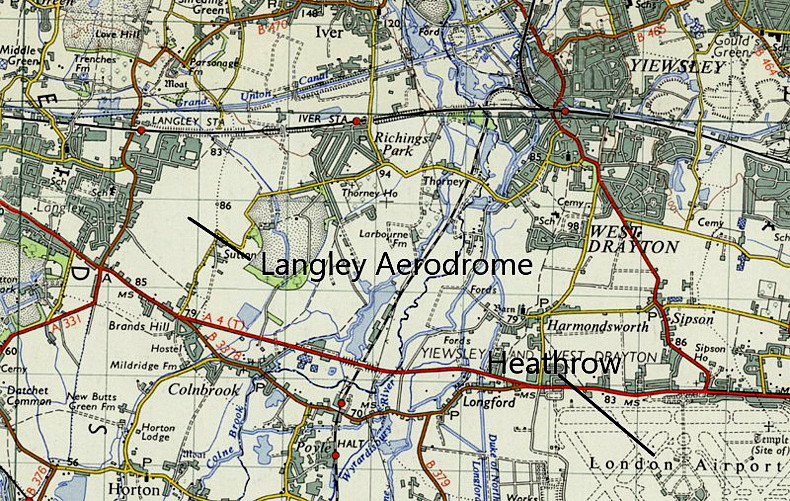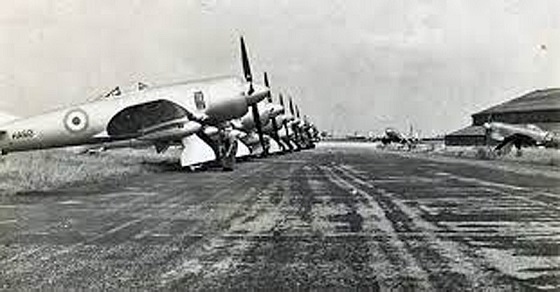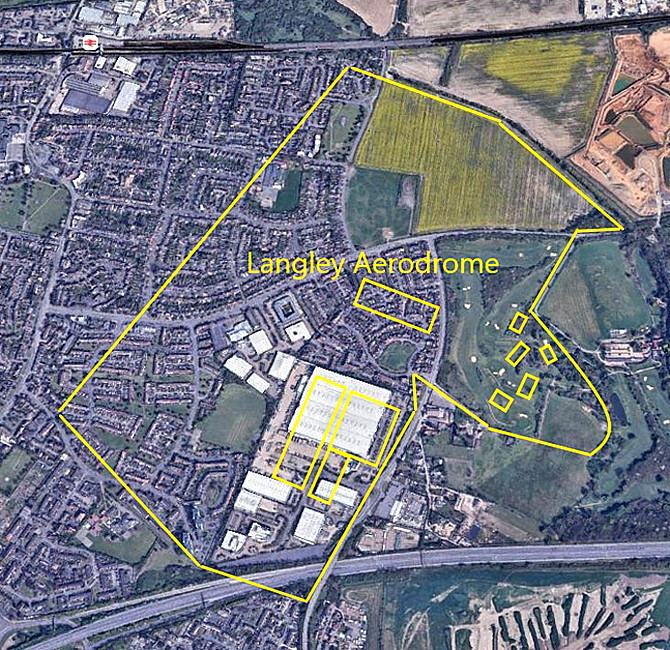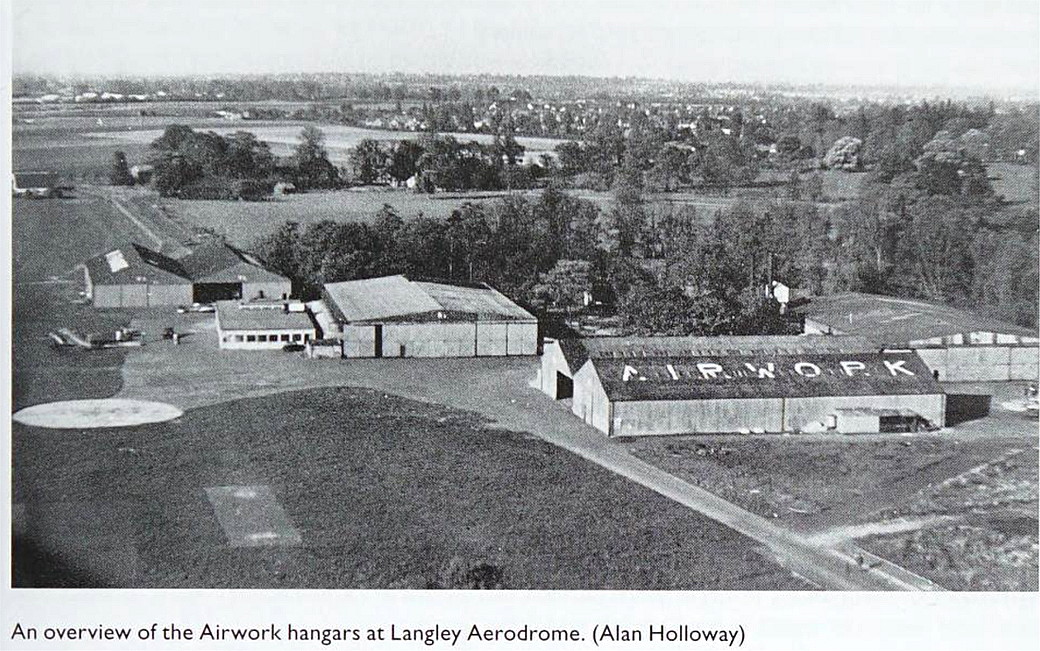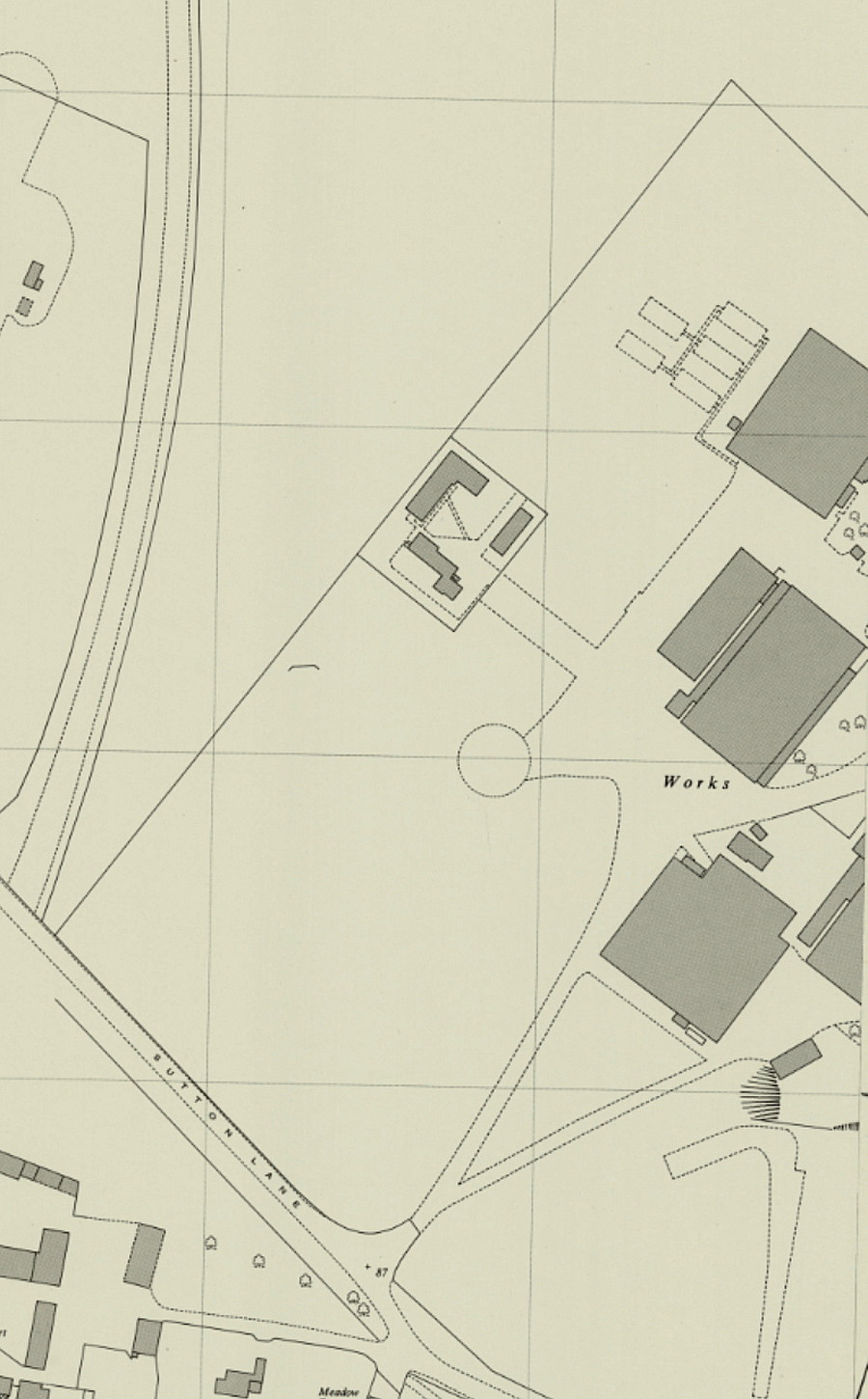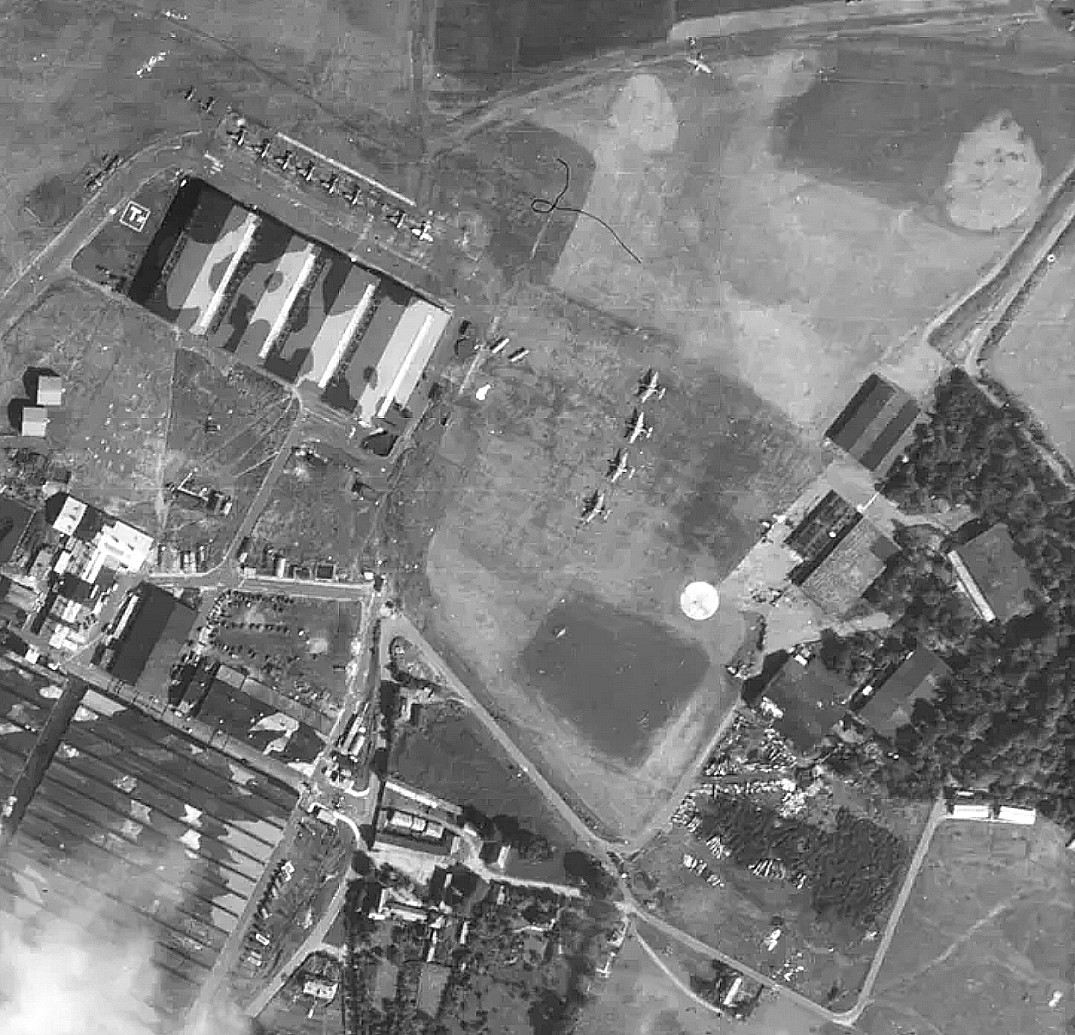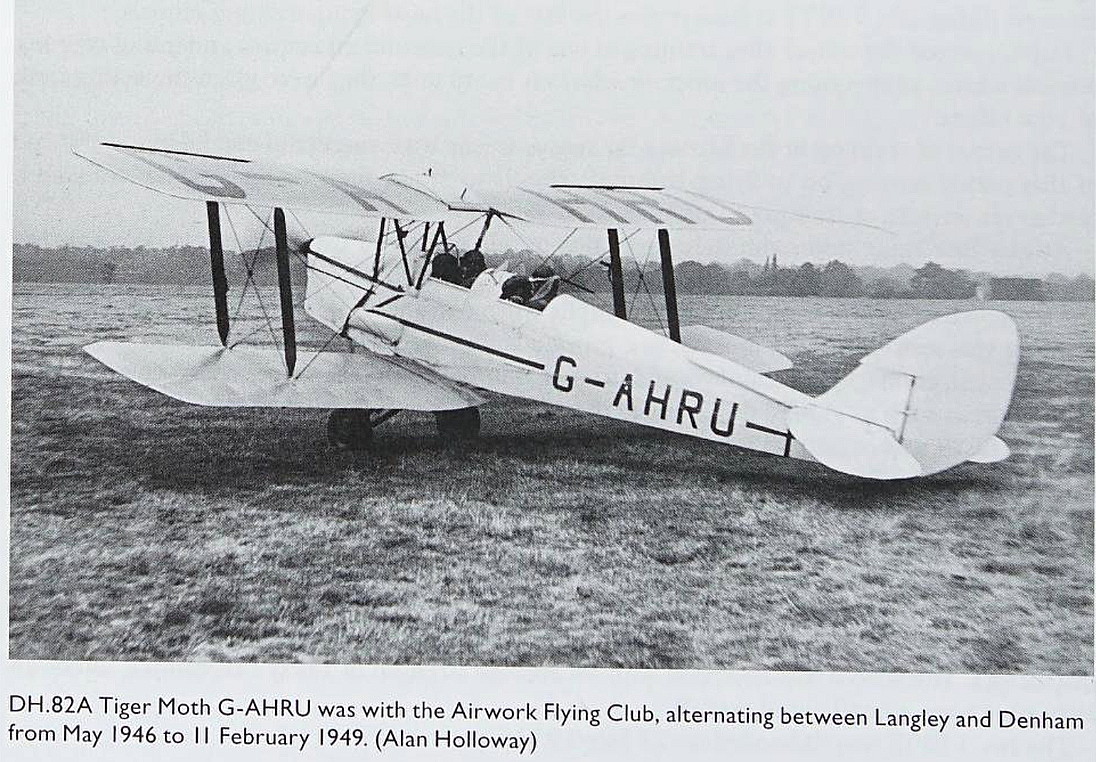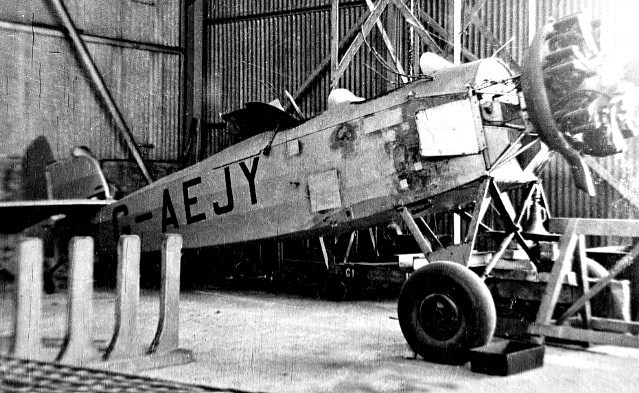Langley
LANGLEY: Civil airfield (Aka PARLAUNT PARK)
Operated by: The Hawker Aircraft Co
Activities: Mostly flight testing by Hawker Aircraft Co in WW2
Manufacturing: WW2: The Hawker Aircraft Co
Post WW2: Airflight**, Hawker Aircraft
Maintenance: Airwork, BSAA, Silver City
Location: Parlaunt Park, 3.5nm ESE of Slough town centre
Period of operation: 1939 to 1956
Runways: The principal runway at LANGLEY (in 1951and presumably much the same before?) was the grass runway, 05/23 and 1289 long. On a map of the site kindly provided, it has hand written annotations saying the “Airfield Allocated to M.O.S” and “Amended Aug. 1951”. The 05/23 runway is described as “1,400 YARDS GRASS STRIP” and the outline of two other roughly 10/28 and 17/35 runways are both described as “Grass Strip not in general use. The length of the 10/28 runway was about 1006m and 17/35 roughly 900m. On all three the ‘runway’ width appears much the same and really quite wide at approximately 180m.*
NOTES: Originally built for Hurricane production when BROOKLANDS became inadequate, construction started in 1937 and the factory opened in 1939. Later the Tornado, Typhoon, Tempest and Fury were developed and first flown here, as well as the later Hurricane Marks IIa, IIc and IId. The significant first flights were:
TYPE SERIAL No. DATE
Tornado PS219 6th October 1939
Typhoon PS212 24th February 1940
Tempest V HM595 2nd September 1942
Fury F.2/43 NX798 1st September 1944
According to Jarrod Cotter in his excellent book Battle of Britain Memorial Flight the last Hurricane ever built, (of more than 14,500 - a Mk.IIc PZ865, was rolled out on the 27th July 1944 and test flown by Hawker’s Chief Test Pilot, Group Captain P W S ‘George’ Bulman who had flown the prototype Hurricane K5083 on the 6th November 1935 from BROOKLANDS (SURREY). BROOKLANDS was the main Hawker factory up until the run up to WW2 when the Gloster factory at HUCCLECOTE started producing Hurricanes. The other two major production centres in WW2 were the Austin Motors factory at LONGBRIDGE (WEST MIDLANDS) and Canadian Car Company in Montreal.
Those who prefer historical accuracy are often at pains to point out that many more Hurricanes than Spitfires participated in the Battle of Britain, and indeed, those that flew the type held them in high regard. Another feature of just how good the Hurricane was, is that unlike the Spitfire, it did not have to undergo radical redesigns to remain a formidable fighting machine, as proved by the the fact that production ceased in mid-1944. This is not to try and say the Hurricane remained in any way equivalent to the various later Spitfire versions, which it clearly wasn’t.
By early 1940, and probably before, it was clear that a much better version of the Hurricane was needed as a priority. This turned out to be the Mark IIA with the Merlin XX engine and it first flew here on the 11th June 1940. Within a quite short period it was achieving 348mph in level flight and fully armed - apparently the highest speed of any of the versions of the Hurricance.
THE LAST HURRICANE
This particular Hurricane, PZ865, did not enter squadron service, instead Hawkers purchased it from the Air Ministry and used it as a communications and test aircraft. On the 1st May 1950 it was placed on the civil register as G-AMAU, repainted in royal blue with gold trim and competed in several air races, including the 1950 King’s Cup when it achieved second place, flown by Group Captain Peter Townsend. It also featured in the 1952 film Angels One-Five and the 1969 film Battle of Britain. Hawker restored the aircraft in 1971 and presented it to the Battle of Britain Memorial Flight when it was based at COLTISHALL (NORFOLK) in March 1972.
MAP OF LANGLEY (see Runways above)
*This 1951 map also gives other interesting information. For example it shows that even then part of the Hawker factory (on the SE side of the airfield) had been leased to the Ford Motor Co. The actual annotation reads, “B.C.E.F. & S. have been leased to Ford Motor Co.” and, roughly NE of the main factory, “Homewood Park Site allocated to USAAF for storage purposes”. Later on the entire factory site was taken over by Ford to produce trucks.
A FORGOTTEN HISTORY
It seems incredible to me at least how this very significant aviation site seems to have nigh disappeared almost without leaving any trace. Many people think it closed when Hawkers opened up at DUNSFOLD in the early fifties. In fact most of the major assembly work on Hawker Hunters for example was done here up to 1958 or thereabouts. These major components were then transported by road to DUNSFOLD. The last recorded aircraft movement on the airfield according to the control tower records was in 1956. For many people, (myself included until I started researching this Guide), the Hawker factory at LANGLEY will be remembered as the Ford Motor Company truck factory easily visible from the M4 motorway, from 1959 until the late 1990s.
AIRFLIGHT
**It appears that Airflight Ltd converted an Avro Lincoln G-ALPF, into a Lincolnian freighter for Surrey Flying Services which was used as a tanker in the Berlin Airlift. This being I think, highly indicative of the multitude of small and mostly woefully underfunded enterprises that sprang up after the end of WW2 when masses of what they considered themselves to be ‘skilled’ aircrew and groundcrew sought to pursue a living. This seems a topic not much explored? From the little I have learnt it does seem, for pretty obvious reasons, that many of these people found it hard to adjust to the much more "stringent" controls imposed on civilian operations.
Note: This Avro 691 Lancastrian 3 operated by BSAA crashed in the Andes on the 2nd August 1947. See Wikipedia for a detailed account.
BRITISH SOUTH AMERICAN AIRLINES (BSAA) and SILVER CITY
It certainly deserves mentioning that the famous BSAA airline and their ill-fated Avro Tudors were based here. Silver City also used it as a maintenance base as did, (according to an eye-witness report), the Argentinian FAMA airline who had their Avro Yorks serviced here. The Film Production Unit Flight from the nearby Pinewood Film Studios were based here too and their fascinating activities, especially in WW2, certainly deserve a book to be written if enough information can still be found today.
A MICHAEL T HOLDER GALLERY
Note: The picture of the last Hurricane was published in the Slough Observer. See my notes above for more info.
Note: The picture of some Sea Fury's lined up was perhaps taken in 1947, or 1948.
The clue being the BSAA Avro Tudor IV in the background, the type entering service with BSAA from July 1947. The Sea Fury became operational with the Royal Navy in September 1947.
SOME MORE ITEMS
In April 2025 Mike Holder found the following four items from the book, Airwork - A History, by Keith McCloskey.
Note how the Hawker Factory, in the aerial vertical photo, had been "camouflaged". A great target aid to any marauding enemy bombers!
This being as they stand out very well from the surroundings. I suspect that none of those responsible had ever flown? The history of camouflage techniques is, I think, very interesting. May well be mistaken of course, but believe the early days were mostly during WW1? Being a French term, perhaps they were the first to start investigating techniques? As I understand it, it can be highly effective on a small scale, from people to machines and diminutive buildings. Pretty much useless when it comes to large free standing structures, such as big hangars on aerodromes.
This example, when in RAF service carried the serial T7883. After being 'civilianised' it appears that Airwork became the first owner. On the 11th February 1949 it was sold to India as VT-DBZ. Without any doubt, after WW2, when surplus DH82A Tiger Moths flooded the civil market, it will never be known just how many fledgling pilots earned their 'wings' on this type. Common as muck then of course, but now prized classics.
Back in the day regarded by instructors as being an excellent trainer as it did not fly very well - quite a poor design really, adapted from the DH.60 Moth series. So, to make it fly very well, student pilots really did have to learn the skills required. Which of course would stand them in good stead later on. Especially by learning to use you feet when flying!
FOOTNOTE
We have Mr Graham Frost, a great friend of this 'Guide' to thank for sending in this picture. Pictured in a hangar at LANGLEY, the photo dates from 22.03.43 to 24.04.46 when it was registered as being based here. This example being the only Fleet 7C-2 appearing on the British register, and was broken up at Altringham, south west of Manchester in July 1959.
The type was being built in Canada and the first flight was on the 27th June 1930 and it entered service in the RCAF the following year. However, it appears that seven examples were built for civilian operators. One of which arrived in England being registered as based at CROYDON and/or HESTON from 07.05.32 until 22.06.39. The next owner kept it at HESTON from 04.07.39 until 22.03.43. As private flying was officially banned during WW2, it probably never flew?
Only some seventy or so examples were made, and as far as I can make out, only three survive. One being in the Nanton Lancaster Society museum south of Calgary in Alberta. Several years ago my wife and I visited friends living in this area and I was taken on a trip to visit this museum. Wandering around taking pictures I noted the Fleet 7C-2 Fawn, so snapped that example. I suspected it was rare, but had no idea how rare!
Pete Johnson
This comment was written on: 2017-10-11 21:36:14Very interesting, and lots of detail. Thank you very much. I also am intrigued by what went on during 1939/40 at Richings Park Mansion/House (Richings Lodge, Percy Lodge) former Stately Home about 3/4 mile away.. Used by Bomber command but now demolished. There seems to be no information
Andrew Cowan
This comment was written on: 2017-11-25 21:25:50We moved from Chelsea in London in the early 1950's and my elder sister and I went to school in Swabey Road and can remember watching from the school playing field parachutists jumping from air-balloons moored at the airfield. I've often thought about this memory over the years but have only today thought about looking It up. We'd often play there I particularly remember being in the soggy pillboxes dotted around and playing with a gasmask or two which had been discarded.
Reply from Dick Flute:
Hi Andrew, Many thanks for the memories, an aspect of Langley which I was certainly not aware of which I shall keep posted. Best regards, Dick
Roy Perry
This comment was written on: 2018-09-09 21:13:35In the summer of 1949 I cycled to Langley from my home in Ruislip. I saw G-AMAU and G-AFTA - and also the remains of two DH 86B Expresses which I noted as G-Aczp and G-AENR. Now there is doubt about CZP being there - so what were the two scrapped aircraft regs/ Sadly, I had no camera. Can you help?
Mark Spicer
This comment was written on: 2018-09-20 21:38:58I remember going into a complex of underground bunkers in Richings Park back in the 70’s, does anyone know the connection these had with the Hawker Factory, I think they are still there but now on private ground. Thanks
Tony Climie
This comment was written on: 2019-01-19 19:54:01In reply to Pete Johnson regarding what went on at Richings Park Lodge in 1939/40, in addition to it's as a temporary HQ for Bomber Command, it also housed a secret Air Intelligence unit, AI1(b), who's task was to provide Bomber Command with targetting material, including Target Maps. Bomber Command HQ moved out in March 1940 when it's permanent HQ site was "completed" but AI1(b) stayed on untill around October 1940 when it moved to Hughenden Manor near High Wycombe, close to BC's HQ at Walters Ash. I work as a WW2 Volunteer Room Guide and part-time researcher for the Trust at Hughenden and am interested in why AI1(b) moved out. My belief is that AI1(b) would have stayed at Richings Park if the Lodge hadn't been badly damaged by a German mine sometime in 1940 but does anyone on this site know what date the Lodge was damaged by the mine? I've looked at Bombs over Bucks but without local knowledge, I'm unable to pinpoint the actual date. Can anyone help? Many thanks Tony
Kieron Kirk
This comment was written on: 2019-09-30 18:58:23Further information from The Hawker Archive at Brooklands. Ist flight of the first Hurricane "erected" at Langley- N2320 Hurricane I, 20th September 1939-pilot "George" Bulman, two flights each of 30 minutes. 1st flight by the last Hurricane built-PZ865 Hurricane IIC at Langley-pilot "George" Bulman-27th July 1944,two flights of 25 and 40 minutes. What were probably the last flights at Langley took place on the 26th November 1956. Duncan Simpson flew a Dragon Rapide G-AHGG from Dunsfold with four passengers. As in David Lockspeiser's log, "Hughie,Bill,FB and self". Simpson returned to Dunsfold alone, leaving the above four pilots to fly the following to Dunsfold,G-AEUJ, Miles Whitney Straight, G-ABMR Hawker Hart, G-AFTA Hawker Tomtit and G-AMAU Hurricane IIC.
Kieron Kirk
This comment was written on: 2019-10-03 19:16:50Thanks for posting my first contribution to this wonderful site. The Dragon Rapide that I mentioned should be G-AHGC. I must concur with your " A forgotten history", the following shows the contribution that Langley made to aviation in the UK. 6,914 Hurricanes. 15 Typhoons. 1,348 Tempests. 925 Fury/Sea Furys. Total 9,902 a/c in 14/15 years, not to mention hundreds of Hunters fitted out, assembled, function tested and painted before transfer to Dunsfold. Kieron.
Michael Holder
This comment was written on: 2020-05-09 14:26:26Just before the WWII Pasolds built a knitwear factory on the south side of the GWR main line next to the railway station. The sports field - most factories had cricket teams - backed on to the edge of the airfield. In the early 50s I accompanied my father to his home matches at Pasolds and being only about 7 or 8 years old I was left to my own devices to run about. I used go to the eastern end of the cricket field and watch the gliders operating from the airfield. This flying did not last much longer as Heathrow developed down the road. When there was no wind you could hear the pilots chatting in the cockpit.
DENIS SEXTON
This comment was written on: 2020-09-27 15:48:22Kieron Kirk you mention Miles Whitney Straight GA-EUJ,. Hawker Hart G-BMR , Hawker Tomtit G-AFTA, Hawker Hurricane G-AMAU. I have just looked at my 1957 copy of Ian Allan civil markings all these aircraft were still flying, G-AMAU is still flying with the BOBMF at Coningsby Lincs. i first saw this aircraft at White Waltham air show 1956
John Buchanan Potter
This comment was written on: 2020-12-04 12:13:48I recall visiting Langley airfield in around 1955. The RAF section in our school Corps had opportunity to send cadets to Langley for Glider Training in - as I remember - Sedburgh (?) Gliders. Great fun. We were wiched into circuit flights.
Kieron Kirk
This comment was written on: 2021-03-18 11:22:03Further to my comments 2019-10-03, more Hurricanes built at Langley. Thanks to the late " Jim" Halley of Air Britain and his Aircraft of the Royal Air Force, three Hurricanes not to be found in the books by F K Mason or B Robertson. KW892, LF517 and LF518 which makes the total Hurricane production at Langley of 6,917. Quite how a 72 year old archivist at the Brooklands Museum, 76 years after the last Hurricane flew at Langley should be able to find these 3 a/c when the aforementioned authors did not! Kieron.
We'd love to hear from you, so please scroll down to leave a comment!
Leave a comment ...
Copyright (c) UK Airfield Guide















